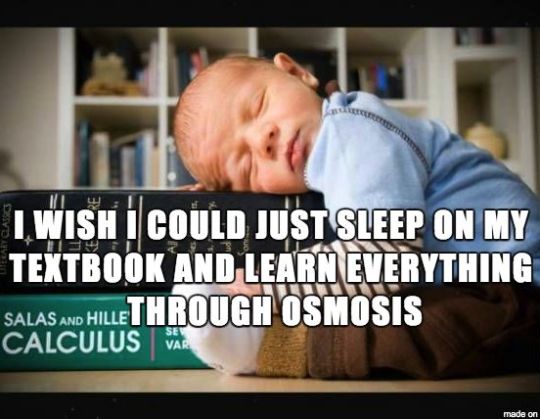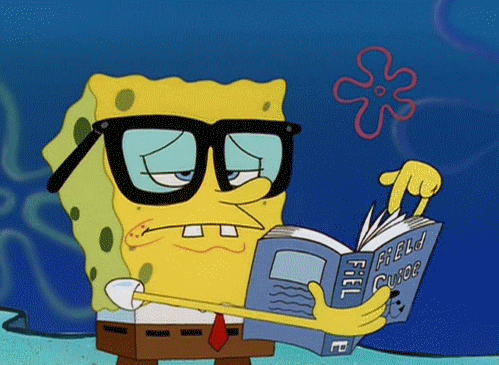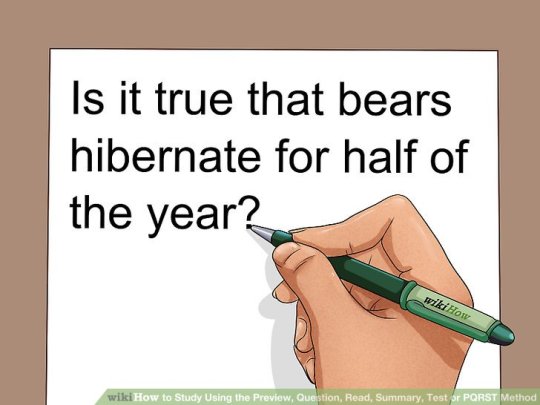#critique u flash fiction challenge
Explore tagged Tumblr posts
Text
Featherlight
Red vs. Blue. South/CT. 340 words. Rated G. Written for the Critique U Flash Fiction Challenge and Femslash February.
The room is dim, morning gray, and South wakes grunting and blinking the sleep from her eyes and feeling for the space beside her in her bed where Connie should be, and isn’t.
Her eyes un-blur and Connie is silhouetted in silver-blue light, sitting up at the end of the bed, shadow side to South, and the light around the feathery soft edges of her hair gives the faint impression of a halo. Her hair hangs to the side toward South, obscuring most of her face—just her lips and the tip of her nose in view. Connie often looks mousey, with the shape of her mouth that shows her front teeth when her face is at rest, lost in thought and looking somewhere South can’t see. Right now, though, something about the slope of her nose and the angle of her jaw makes her look more birdlike, delicate and only just barely at rest, like she might take off at any moment in a flutter of wings.
South starts to speak, and stops. Connie’s lips move, silent, as if speaking to herself or to someone unseen. You could miss it, in the dim light. You could especially miss it when you’re sleepy and not quite sure you’re awake at all. It feels like a dream, almost. Like Connie might look up, and her face turn into someone else’s. Or she might dissolve into thin air, not real at all.
Her lips move again. Talking to herself, maybe, or rehearsing something not yet said. Then Connie turns, and her eyes come into view, and her mouth curves into a smile, and she’s real. Or maybe it’s South that’s real now. Because for a moment there, she felt strangely like Connie was somewhere else, somewhere lightyears away, like South wasn’t in the room, maybe wasn’t real at all. Like maybe she was the dream about to dissolve.
She forgets that moment, almost. For a while. But later, looking back, she will remember Connie with one eye in shadow, featherlight and about to fly away.
#agent south dakota#agent connecticut#southct#rvb femslash february#red vs blue#critique u flash fiction challenge
14 notes
·
View notes
Text
alphaville (1965) is such a fascinating film. the sci fi dystopia onto which it juxtaposes the well-known noir detective lenny caution is an authoritarian city controlled by the supreme logic of the computer alpha 60, a setup that is generally used for anti-communist films. however, this film deliberately sets itself outside the dichotomy of capitalism and communism—the main characters are trilingual, delivering lines in english and russian but carrying out dialogue in french—and establishing alphaville as a critique of authoritarianism and of modernity. between lengthy quotations from borges, alpha 60 speaks of superior and inferior strains of human, the overriding value of logic and obedience, equates with a lack of emotion, and the non-existence or non-articulability of the past, ideas espoused both by fascist regimes and by the progress-oriented, deterministic modernity that informed the architecture of the midcentury modern office blocks where the film is shot and the science fiction u- or dystopian literature that informs the film. these ideas are disproven in the person of lenny caution, a classic noir detective out of twenty years in the past whose emotionlessness coexists with his rebelliousness and illogical action and whose obsessive flash photography drags the past in perfect preservation into the future. the light of the flash photography is one instance in a motif of light and darkness inverted, both visually and in terms of connotation, that reinforces the film’s challenging of dichotomies. although its primary conclusion of love (between a middle aged white man and a young white woman) as the antidote to this social sickness is fairly pedestrian, the cinematography and the conception of alphaville itself are both fascinating and highly influential. as a note for those considering watching the film, it does have extended sequences of flashing lights as well as high-pitched beeping noises, so if you are sensitive to those i would recommend avoiding this film. however, outside of that warning, i would say that alphaville (1965) is an interesting and effective sci fi noir
#also real life suburb of são paolo named itself alphaville???#that’s almost as bad as that meal replacement drink company calling itself soylent green#torment nexus and so forth#ryddles
2 notes
·
View notes
Text
How to Improve Your Reading Skills Using the PART Method.
The PART reading method is a method which I learned from reading Making A’s in College by Sandra U. Gibson. The PART Method is Dr. Gibson’s equivalent to the Hudgins Reading Method or the SQ3R reading method, both of which I have discussed in past blog posts. The PART Method has two purposes a. to help you read faster and b. to help you better retain the information you are reading. In this post, I am going to explain how to use it, and why it works.

PART stands for: Preview, Actively Read, Rehearse, Test.
Preview to Prepare for The Most Important Points
Previewing means taking time to review all readings before you actually start the reading. I talked about the importance of this a lot in my post on the Hudgins reading method, but basically, you want to review all headings, subheadings, phrases in bold or italics, any pictures, graphs and charts, and you want to read both the introduction and the conclusion. Reading the conclusion first may seem weird, but its a habit I’ve been using for years, and I promise you it will help with your reading comprehension. The conclusion tells you what you are supposed to get out of the reading, it clarifies and synthesizes the main point. Reading the conclusions first provides helpful context clues as to what information will be important.

Actively Read
Most of us are in the habit of passively reading, meaning reading with just our eyes. Unfortunately, passively reading only works for recreational and light fiction reading (sometimes), not for academic reading. Academic reading requires more thinking. When you actively read you should be really taking the time to digest what is being said and be thinking about it. Challenge it, ask yourself questions, write down questions to ask in class, take notes. Most importantly, make sure to focus, and not to daydream, or get distracted. You want to make sure you are absorbing all of the material.

Rehearsing/Revision
After you read, you need to review, practice, and revisit. There are a number of ways people rehearse the information. Some methods include: writing notes, reviewing and revising notes you already wrote, drawing mind maps, making flash cards, testing yourself, recording and listening to yourself going over the material, and teaching someone else the material. What method(s) work best for you is going to be based on your learning style, which I will be discussing in a future blog post.

Test Yourself
You should be testing yourself both as you read, and afterward in preparation for tests. Ask yourself questions based on what you just read, and be honest about whether or not your answers are adequate. Follow the 5Ws (Who, What, When, Where, Why, and How) to make sure that you are understanding the concepts, and re-read/seek help if you are unsure of the answers.

One critique I have of the PART system is that its not exactly linear, in other words, there’s a good deal of blurriness between the different steps. For instance, if you test yourself, and end up realizing you don’t know the information, you might want to go back and add it to your notes after you re-read, google, or seek help. You don’t have to do everything in perfect order, but using these four strategies together will make you a faster, and more effective reader.
#reading#textbook#text#middle school#high school#college#uni#university#studying#studyblr#school#stuygram#homework#PART#OC#read#book#books
153 notes
·
View notes
Text
The fantastical HBO series imagines white supremacists as literal monsters but fails to make its Black heroes as compelling.
HANNAH GIORGISAUGUST 14, 2020
Like many young people, the protagonist of the 2016 novel Lovecraft Country devours entertainment that his father finds foolish and reprehensible. Atticus loves reading science fiction, fantasy, and horror—genres that, as his dad points out, are dominated by white authors and full of racist stereotypes. The tension inherent in Atticus’s fondness for such writers drives much of Lovecraft Country, which is set in the 1950s. And no author looms larger in Matt Ruff’s book, or in the HBO adaptation that premieres Sunday, than the one for whom it is named. Early in the novel, Atticus recalls a night when his father handed him a poem by H. P. Lovecraft called “On the Creation of Niggers,” which describes Black people as “semi-humans” and “beasts.” The verses are a departure from the late author’s hugely influential brand of cosmic horror and a succinct illustration of Lovecraft’s bigotry.
But Lovecraft Country inverts the xenophobic preoccupations of its titular author, suggesting that white racists—and not Black people—are the real beasts. Considering the long history of Black people being depicted as monsters throughout American cinema, especially in sci-fi and horror, this is an admirable premise that is often rendered vividly. When terrifying creatures appear on-screen in the HBO series, the threat they pose to the story’s heroes feels urgent and visceral. Like the novel, the show follows Atticus (played by Jonathan Majors), a young Korean War veteran on a quest to find his father, Montrose (Michael K. Williams), who disappeared en route to Massachusetts. Setting off from Chicago, Atticus is joined by his Uncle George (Courtney B. Vance), as well as his childhood friend Letitia (Jurnee Smollett), whom the series promotes to love interest. Along the way, the three face dangers both mundane and otherworldly, from encounters with Jim Crow–era racism to battles with bloodthirsty behemoths resembling the shape-shifting “shoggoths” of Lovecraftian lore.
Read: ‘Political correctness’ won’t ruin Lovecraft’s legacy
But although the book dramatizes the wickedness of white supremacy without losing its Black characters’ interiority, the adaptation bears down on the cartoonish villainy of its white antagonists. Again and again, Lovecraft Country reminds viewers that ordinary racists can be transformed into something even more grotesque. In many cases, these sequences are literal: In the first episode, a white sheriff stops the central trio to inform them that they’re driving through a “sundown county,” a reference to the segregated towns where Black people seen after dark were often killed. After humiliating Atticus, the slur-wielding sheriff and two other white officers force all three Black characters to the ground and accuse them of robberies. That’s when monsters emerge from the forest, ripping one officer’s arm clean off his body and later turning the sheriff into a beast just like them. The sequence is satisfyingly pulpy, with dynamic pacing that builds legitimate intrigue and sometimes even dread.
It is unclear what animates Lovecraft Country’s main Black characters—Atticus, George, and Letitia—when they’re not fighting racists, whether man or beast. (Elizabeth Morris / HBO)
The HBO series, which was written and developed by Misha Green, has received heaps ofearly praise from critics, many of whom cite itsusage of horror to dramatize the ugliness of racism. But Lovecraft Country stops short of deploying horror to convey new insights about the perils of white supremacy. Across the five episodes made available to critics, the show spends so much time focusing on its white characters’ near-comic monstrousness that it undercuts the development of its Black leads. It’s clear that the series thinks racism is evil, more so than even Lovecraft’s shoggoths. Through a convoluted subplot about a cult-like family of bigots known as the Braithwhites, the show also makes clear how intimately racism can figure into Black people’s lives. But halfway through the series, I’m still left wondering who Atticus, George, and especially Letitia (a classic “Strong Female Character” archetype) really are. What animates Lovecraft Country’s Black characters when they’re not fighting racists, whether man or beast?
It’s not enough to ask that viewers root for Atticus, George, and Leti just because racists are bad. For Lovecraft Country to be a series that successfully melds genre tropes and social commentary, the show needs its characters to be compelling even absent the threat of a sheriff’s loaded shotgun or a monster’s bloody jowls. As is, the show inadvertently simplifies the realities of white supremacy with its monster allegory, while treating the Black cast less as characters in their own right and more as vehicles for a sweeping critique of American racism.
To be fair, some of this disconnect isn’t necessarily the fault of the series. The dystopiandynamics of the current national reckoning on racism can make any supernatural depiction of bigotry feel underwhelming. Though white supremacy was certainly a danger at the time of the book’s release, daily life without a deadly pandemic and a virulently racist president felt altogether less eerie. When Ruff, who is white, published Lovecraft Country in February 2016, the country was in the twilight of the Obama years, only 18 months removed from the start of protests against police violence in Ferguson, Missouri.
The book also preceded a series of what one might call “racial-justice entertainment.” In the time since Lovecraft Country’s publication, an entire cottage industry of Black Lives Matter–adjacent books and productions have captured audiences’ attention by wrestling with the threats that institutional racism poses to Black life in America. These works have spanned genres and media—there are young-adult novels such as The Hate U Give and Dear Martin, police dramas such as Blindspotting and BlacKkKlansman, and period pieces such as Green’s TV series Underground.
The recent resurgence of Black horror and speculative fiction offers perhaps the most useful lessons for Lovecraft Country and future productions like it. Most obvious, Get Out, which was written and directed by the Lovecraft Country producer Jordan Peele, was an effective and entertaining film not just because of the brutality its protagonist faced, or even because of its allusions to contemporary and historical racism. The “monsters” hunting the film’s hero, Chris (Daniel Kaluuya), weren’t pure evil. Unlike Lovecraft Country’s Braithwhite family, who are styled to look so Aryan that they nearly resemble demonic elves, the Armitages concealed their dark predilections under the veneer of NPR-loving, Obama-voting liberal niceness.
Read: What made that hypnosis scene in ‘Get Out’ so terrifying
Chris, for his part, didn’t relate to other Black people only when targeted by white violence, nor was he sympathetic only when faced with the threat of a bodily takeover. When police lights flash on Chris at the end of the film—as when the Black hero of George Romero’s 1968 classic Night of the Living Dead is killed by the white mob in that film’s final scene—the intractability and weight of racism are communicated without relying on horror conceits. Even Atlanta, Donald Glover’s Twin Peaks–esque FX series, toys with the supernatural and the surreal to underscore points about race made in its quieter moments. The mystical elements heighten and complicate existing dread; they alone don’t create it.
Racial horror is most effective when the central characters feel rich and fleshed-out, when audiences are invested in them not just out of implied moral obligation. For Lovecraft Countryto simply flip the usual script with new creatures, then, isn’t enough. The series needs to double down on its most spirited scenes, such as when it navigates a beautifully staged 1950s Chicago, where a broad range of Black characters populate the screen and make the story feel most alive. Spending time with Atticus, George, and Leti in more earthly realms—where the relatable challenges they face add as much to the story as the ravenous aliens do—would make the dangers lurking in Lovecraft Country feel more real, monsters and all.
We want to hear what you think about this article. Submit a letter to the editor or write to [email protected].
Hannah Giorgis is a staff writer at The Atlantic, where she covers culture
0 notes